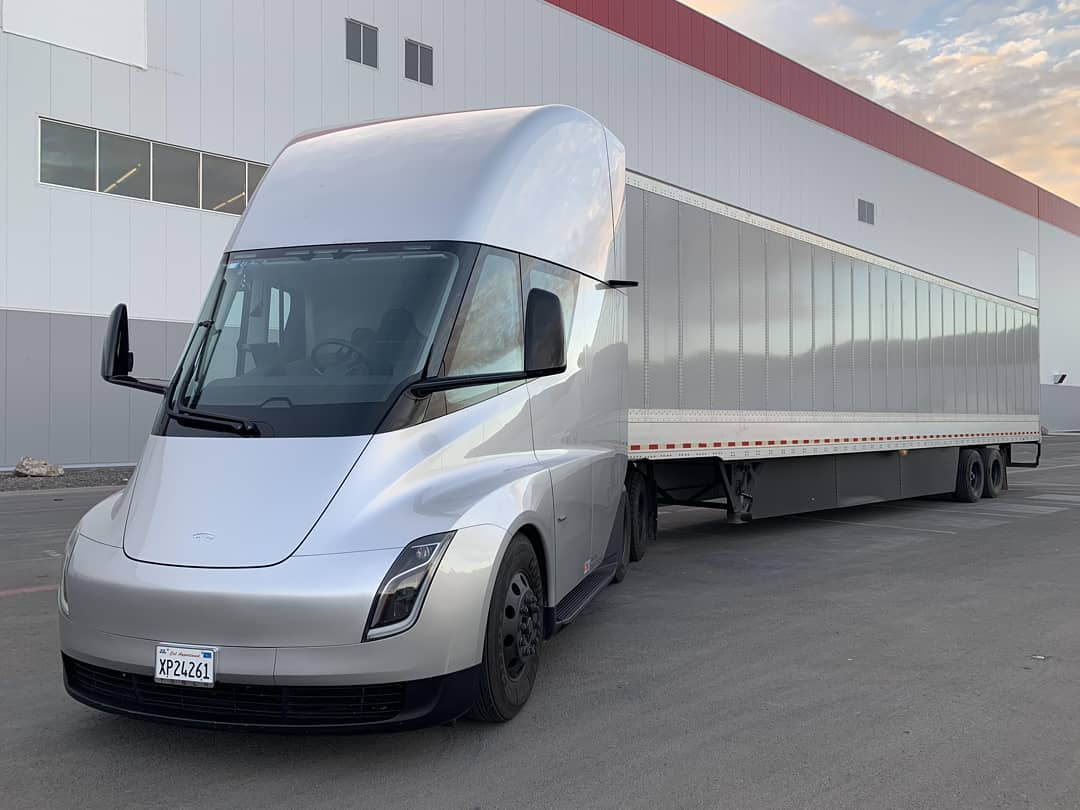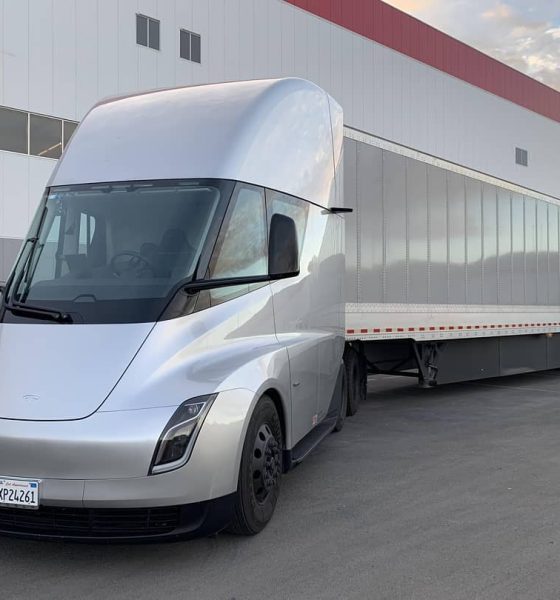

News
Tesla addresses Zero-Cobalt future in latest Impact Report
Tesla outlined its goal for responsible Cobalt sourcing in its latest 2019 Impact Report, released on June 8, 2020.
The automaker plans to eventually produce a zero-cobalt battery for its vehicles and energy products, in its bid to source metals in a responsible fashion that maintains not only the integrity of the company but also the human rights of those involved in the sourcing of raw materials.
“Tesla’s batteries use nickel-rich cathode materials which contain less cobalt than other widely use cathode chemistries in the industry with our ultimate goal being to eliminate cobalt completely from our cells,” notes Tesla in its Impact Report.
Tesla’s lithium-ion batteries utilize an NCA Cathode makeup, comprised of a Nickel-Cobalt-Aluminum structure. The combination of the three metals creates a battery that has longevity and stability throughout the life cycle of the vehicle. Cobalt supplies a battery with high-rate performance and enhances cycle stability when exposed to high levels of heat, according to ScienceMag.
Cobalt, while controversial, is a crucial element in lithium-ion batteries, at least for now. While Tesla continues to work toward the omittance of the element from its batteries, the challenge is finding another metal that can replace Cobalt while maintaining the integrity of the battery.
Under a section titled “Supply Chain Introduction: Responsible Material Sourcing,” Tesla addresses and details its “Supplier Code of Conduct” and “Human Rights and Conflict Minerals Policy.” The two documents outline the company’s expectations for its suppliers and partners and require all members of the Tesla supply chain to uphold responsible and integrity-focused techniques when acquiring Cobalt.
“Tesla is committed to making working conditions in our supply chain safe and humane, ensuring that workers are treated with respect and dignity and that manufacturing processes are environmentally responsible,” the report indicates.
Tesla’s plans to utilize zero-Cobalt batteries are certainly in the company’s future plans. However, while the element is still included in the current battery makeup, responsible sourcing is among Tesla’s main concerns.
Suppliers involved in sourcing Cobalt for the electric automaker are required and expected to follow Tesla’s Code of Business Conduct and Ethics. Although many of the company’s direct suppliers obtain some raw materials through sub-contractors, Tesla conducts due diligence practices that maintain the safety and respect of workers everywhere.
Tesla has even gone as far as removing some risks from its supply chain. The report explicitly mentions areas notorious for child labor, especially in the field of Cobalt mining. “Because Tesla recognizes the higher risks of human rights issues within cobalt supply chains, particularly for child labor in the Democratic Republic of Congo, we have made a significant effort to establish processes to remove these risks from our supply chain,” the company wrote.
The eventual phasing out of Cobalt from the batteries Tesla uses requires an extreme process of due diligence, now. Cobalt has been one of the primary sources of criticism for non-EV supporters. In particular, the issue of child labor has driven as much skepticism from critics as nearly any other topic. However, the regular auditing and due diligence have helped Tesla maintain responsible labor and material acquisition practices, effectively eliminating any criticism for utilizing Cobalt at the current time.
Currently, the company’s cells use nickel-rich cathode materials and contain less Cobalt than any other widely used cathode chemistries in the EV sector. Eventually, zero-Cobalt batteries will be introduced into Tesla’s EVs Still, a controversial subject like the sourcing of the metal requires a tedious and specific amount of verification through a series of annual third-party audits.
The transparency that Tesla provides throughout the Impact Report’s Cobalt Sourcing section shows a responsible process of mining the metal. Tesla states that it has mapped significant areas of the Cobalt supply chain, and ethics concerning sourcing the metal will continue to improve over time.
Tesla’s 2019 Impact Report is available below.

Cybertruck
Tesla updates Cybertruck owners about key Powershare feature

Tesla is updating Cybertruck owners on its timeline of a massive feature that has yet to ship: Powershare with Powerwall.
Powershare is a bidirectional charging feature exclusive to Cybertruck, which allows the vehicle’s battery to act as a portable power source for homes, appliances, tools, other EVs, and more. It was announced in late 2023 as part of Tesla’s push into vehicle-to-everything energy sharing, and acting as a giant portable charger is the main advantage, as it can provide backup power during outages.
Cybertruck’s Powershare system supports both vehicle-to-load (V2L) and vehicle-to-home (V2H), making it flexible and well-rounded for a variety of applications.
However, even though the feature was promised with Cybertruck, it has yet to be shipped to vehicles. Tesla communicated with owners through email recently regarding Powershare with Powerwall, which essentially has the pickup act as an extended battery.
Powerwall discharge would be prioritized before tapping into the truck’s larger pack.
However, Tesla is still working on getting the feature out to owners, an email said:
“We’re writing to let you know that the Powershare with Powerwall feature is still in development and is now scheduled for release in mid-2026.
This new release date gives us additional time to design and test this feature, ensuring its ability to communicate and optimize energy sharing between your vehicle and many configurations and generations of Powerwall. We are also using this time to develop additional Powershare features that will help us continue to accelerate the world’s transition to sustainable energy.”
Owners have expressed some real disappointment in Tesla’s continuous delays in releasing the feature, as it was expected to be released by late 2024, but now has been pushed back several times to mid-2026, according to the email.
Foundation Series Cybertruck buyers paid extra, expecting the feature to be rolled out with their vehicle upon pickup.
Cybertruck’s Lead Engineer, Wes Morrill, even commented on the holdup:
As a Cybertruck owner who also has Powerwall, I empathize with the disappointed comments.
To their credit, the team has delivered powershare functionality to Cybertruck customers who otherwise have no backup with development of the powershare gateway. As well as those with solar…
— Wes (@wmorrill3) December 12, 2025
He said that “it turned out to be much harder than anticipated to make powershare work seamlessly with existing Powerwalls through existing wall connectors. Two grid-forming devices need to negotiate who will form and who will follow, depending on the state of charge of each, and they need to do this without a network and through multiple generations of hardware, and test and validate this process through rigorous certifications to ensure grid safety.”
It’s nice to see the transparency, but it is justified for some Cybertruck owners to feel like they’ve been bait-and-switched.
News
Tesla’s northernmost Supercharger in North America opens

Tesla has opened its northernmost Supercharger in Fairbanks, Alaska, with eight V4 stalls located in one of the most frigid cities in the U.S.
Located just 196 miles from the Arctic Circle, Fairbanks’s average temperature for the week was around -12 degrees Fahrenheit. However, there are plenty of Tesla owners in Alaska who have been waiting for more charging options out in public.
There are only 36 total Supercharger stalls in Alaska, despite being the largest state in the U.S.
Eight Superchargers were added to Fairbanks, which will eventually be a 48-stall station. Tesla announced its activation today:
North America’s northernmost Supercharger Fairbanks, AK (8 stalls) opened to public. https://t.co/M4l04DZ6B5 pic.twitter.com/zyL6bDuA93
— Tesla Charging (@TeslaCharging) December 12, 2025
The base price per kWh is $0.43 at the Fairbanks Supercharger. Thanks to its V4 capabilities, it can charge at speeds up to 325 kW.
Despite being the northernmost Supercharger in North America, it is not even in the Top 5 northernmost Superchargers globally, because Alaska is south of Norway. The northernmost Supercharger is in Honningsvåg, Norway. All of the Top 5 are in the Scandanavian country.
Tesla’s Supercharger expansion in 2025 has been impressive, and although it experienced some early-quarter slowdowns due to V3-to-V4 hardware transitions, it has been the company’s strongest year for deployments.
🚨🚨 Tesla Supercharging had a HUGE year, and they deserve to be recognized.
🍔 Opened Tesla Diner, a drive-in movie theater with awesome, Chef-curated cuisine
🔌 Gave access to Superchargers to several EV makers, including Hyundai, Genesis, Mercedes-Benz, Kia, Lucid, Toyota,… pic.twitter.com/yYT2QEbqoW
— TESLARATI (@Teslarati) December 10, 2025
Through the three quarters of 2025, the company has added 7,753 stations and 73,817 stalls across the world, a 16 percent increase in stations and an 18 percent increase in stalls compared to last year.
Tesla is on track to add over 12,000 stalls for the full year, achieving an average of one new stall every hour, an impressive statistic.
Recently, the company wrapped up construction at its Supercharger Oasis in Lost Hills, California, a 168-stall Supercharger that Tesla Solar Panels completely power. It is the largest Supercharger in the world.
News
Tesla shocks with latest Robotaxi testing move
Why Tesla has chosen to use a couple of Model S units must have a reason; the company is calculated in its engineering and data collection efforts, so this is definitely more than “we just felt like giving our drivers a change of scenery.”

Tesla Model S vehicles were spotted performing validation testing with LiDAR rigs in California today, a pretty big switch-up compared to what we are used to seeing on the roads.
Tesla utilizes the Model Y crossover for its Robotaxi fleet. It is adequately sized, the most popular vehicle in its lineup, and is suitable for a wide variety of applications. It provides enough luxury for a single rider, but enough room for several passengers, if needed.
However, the testing has seemingly expanded to one of Tesla’s premium flagship offerings, as the Model S was spotted with the validation equipment that is seen entirely with Model Y vehicles. We have written several articles on Robotaxi testing mules being spotted across the United States, but this is a first:
🚨 Tesla is using Model S vehicles fitted with LiDAR rigs to validate FSD and Robotaxi, differing from the Model Ys that it uses typically
Those Model Y vehicles have been on the East Coast for some time. These Model S cars were spotted in California https://t.co/CN9Bw5Wma8 pic.twitter.com/UE55hx5mdd
— TESLARATI (@Teslarati) December 11, 2025
Why Tesla has chosen to use a couple of Model S units must have a reason; the company is calculated in its engineering and data collection efforts, so this is definitely more than “we just felt like giving our drivers a change of scenery.”
It seems to hint that Tesla could add a premium, more luxury offering to its Robotaxi platform eventually. Think about it: Uber has Uber Black, Lyft has Lyft Black. These vehicles and services are associated with a more premium cost as they combine luxury models with more catered transportation options.
Tesla could be testing the waters here, and it could be thinking of adding the Model S to its fleet of ride-hailing vehicles.
Reluctant to remove the Model S from its production plans completely despite its low volume contributions to the overall mission of transitioning the world to sustainable energy, the flagship sedan has always meant something. CEO Elon Musk referred to it, along with its sibling Model X, as continuing on production lines due to “sentimental reasons.”
However, its purpose might have been expanded to justify keeping it around, and why not? It is a cozy, premium offering, and it would be great for those who want a little more luxury and are willing to pay a few extra dollars.
Of course, none of this is even close to confirmed. However, it is reasonable to speculate that the Model S could be a potential addition to the Robotaxi fleet. It’s capable of all the same things the Model Y is, but with more luxuriousness, and it could be the perfect addition to the futuristic fleet.








